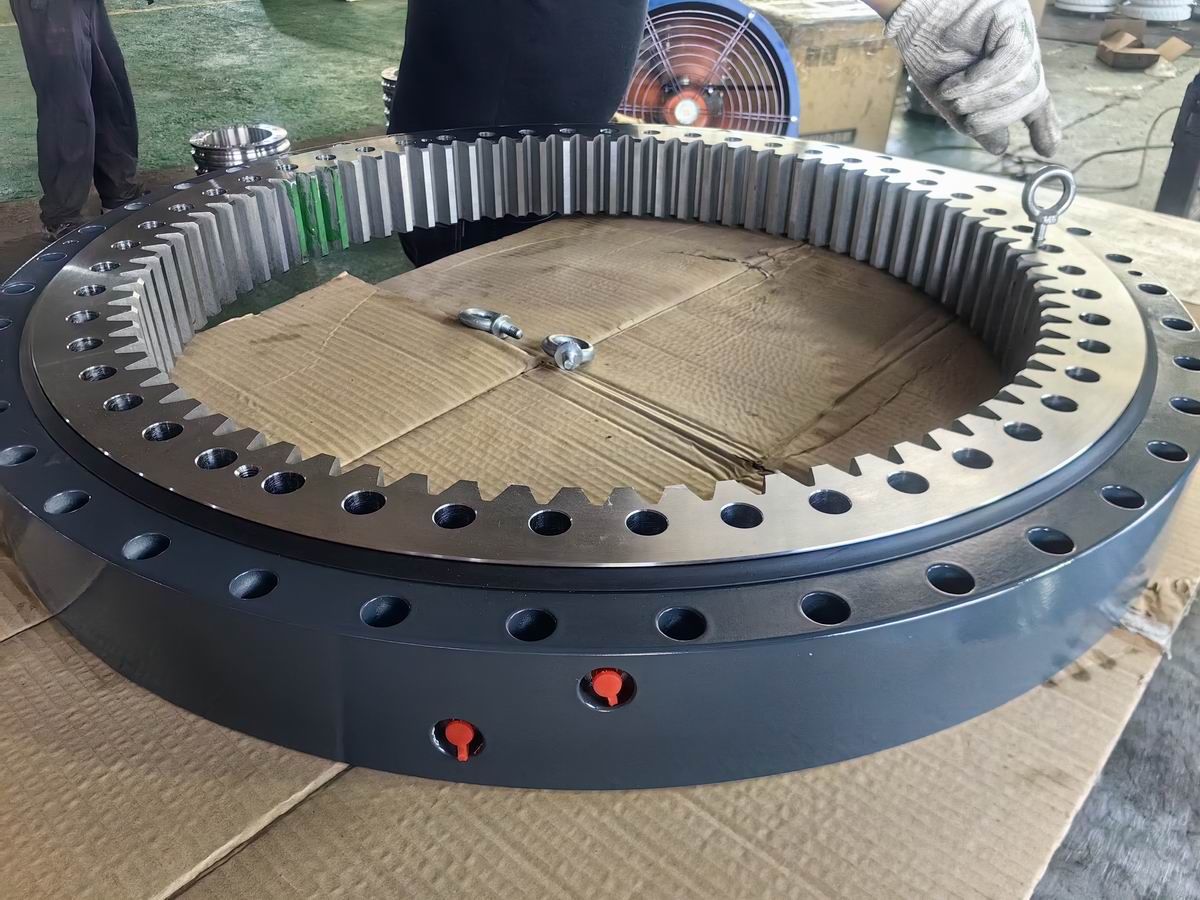Top and bottom layout
Advantages:
Compact structure: space-saving, suitable for scenarios with limited installation space.
Centralised sealing: facilitates centralised lubrication and sealing management, reducing the risk of oil leakage.
Simple process: lower processing and assembly costs, suitable for standardised production.
Disadvantages:
Stress concentration: under high tilting moments or dynamic loads, the plug area is prone to stress concentration, which may reduce fatigue life.
Sensitive to thermal deformation: temperature changes may lead to local deformation, affecting the sealing performance.
2. Layout at a certain distance apart

Advantages:
Better load distribution: dispersing the plug position can improve the stress distribution of the raceway, and enhance the overturning resistance and load uniformity.
Thermal adaptability: Reduce the local deformation caused by thermal expansion, sealing reliability is higher.
Flexibility in maintenance: a plug can be individually overhauled or replaced, reducing maintenance costs.
Disadvantages:
Large space occupation: high requirements on equipment layout, may increase overall dimensions.
Complicated process: need to precisely control the positional tolerance of the two plugs, processing difficulty and cost is slightly higher.
3. Suggestions for selection
Give preference to the scene with separate layout:
Heavy load, high-frequency slewing or high overturning moment working conditions (such as harbour cranes, wind power equipment).
Working environment with large temperature difference or frequent vibration, need to avoid stress concentration and seal failure.
High requirements for long life and low maintenance of the equipment.
Preferred scenarios for top and bottom side-by-side layout:
Light load, low speed or static applications (e.g. small rotating platforms, agricultural machinery).
Strict installation space constraints and the need to maximise size compression.
Cost-sensitive and stable

